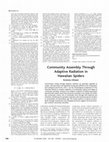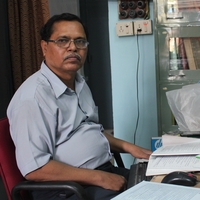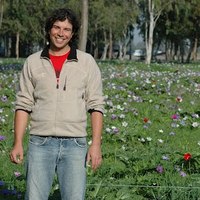Papers by Timo Tahvanainen
Possibilities for energy wood procurement in the Leningrad region are assessed in this report. As... more Possibilities for energy wood procurement in the Leningrad region are assessed in this report. As sources for energy production, wood from thinnings, logging residues, non-industrial round wood and residues from sawmilling are considered. The costs for energy wood procurement are also calculated.
Possibilities for energy wood procurement and use in the Leningrad region of Northwest Russia as ... more Possibilities for energy wood procurement and use in the Leningrad region of Northwest Russia as a tool for reducing greenhouse gas emissions have been analysed in this report. Calculations have been made for selected area, where resources are available and also other preconditions are appropriate for their use for energy production. The study includes estimation of how much wood for energy purposes could be available in the vicinity of the selected area, what are suitable supply systems to consumers and what could be expected costs of energy wood procurement, when taking into account local technical and economical preconditions and constraints.
Silva Fennica, 2007
... Finland; Kaartinen, Pukkala and Maltamo, University of Joensuu, Faculty of Forestry, PO Box 1... more ... Finland; Kaartinen, Pukkala and Maltamo, University of Joensuu, Faculty of Forestry, PO Box 111, FI-80101 Joensuun yliopisto, Finland E-mail timo.tahvanainen@metla ... The development of the tree stock is predicted with individual tree growth and survival models (Hynynen et al ...

Wood Material Science and Engineering, 2008
ABSTRACT Growing markets of chopped firewood have created alternative uses for the by-products of... more ABSTRACT Growing markets of chopped firewood have created alternative uses for the by-products of saw mills. Based on both empirical data and simulated results, we investigated the potential of birch (Betula pendula Roth, Betula pubescens Ehrh.) from commercial thinnings for combined industrial production of sawn timber and firewood billets. In the simulations, different sawing patterns were used for logs intended to combined production of sawn timber and billets for chopped firewood (“saw logs”), and for logs intended only to firewood production (“firewood logs”). Finally, we carried out economical feasibility analysis concerning the differences between the saw mills’ traditional business concept and the novel concept combining sawn wood and firewood production. The bucking results for the recovery of different timber assortments varied only slightly between the different bucking options, i.e. the combinations of timber assortments. The main differences in the volumes of timber assortments were due to the stand type where the birch trees were sampled (planted, naturally regenerated, mixed birch-spruce). In the sawing procedure, the output of sawn timber varied between 24% and 42% of the log volume in the “saw logs”, depending on the log diameter class. As the recovery of sawn timber and firewood billets was counted together in the case of “saw logs”, the log consumption was ca. 1.75 m3 of roundwood per 1 m3 of sawn timber and firewood billets. In the case of the “firewood logs”, the log consumption rate was considerably lower, only ca. 1.35. The economic calculations showed that using the “firewood approach” in sawing may increase the net added value of products between 1.9 to 5.4 euros per m3 of logs, depending on their diameter class. In our view, parallel production of sawn timber and firewood from logs from the first and second thinnings of birch-dominated stands is a concept that could work as an alliance of a sawmiller and a firewood entrepreneur. The concept could be competitive compared to the traditional sawmilling and production of chopped firewood both.

Science, 2004
metry and conventional radiocarbon dating of bulk peat samples from the lowest visually apparent ... more metry and conventional radiocarbon dating of bulk peat samples from the lowest visually apparent peat horizon in each core. Substantially older radiocarbon ages from organic-rich gytjja (mineral substrate) were excluded from new data presented in this paper. Samples were processed by Beta Analytic, Incorporated (Miami, FL) and calibrated with the use of CALIB 4.3 (35) and the Intcal98 data set. . 23. Our estimates of WSL peatland extent (592,440 km 2 ) and total carbon pool (70.2 Pg C) have their basis in a comprehensive GIS-based inventory of all peatlands throughout the region. Data sources assimilated are (i) an archive of printed data reports based on ϳ40 years of field surveys by Geoltorfrazvedka, Moscow, beginning in the 1950s, with updates by the Russian Ministry of Natural Resources in the 1990s. These reports contain detailed maps with associated field and laboratory measurements of peatland depth, area, bulk density, and ash content for 9691 peatlands throughout the WSL, for a total of 29,350 measurements digitized. (ii) Our own field data collected from 1999, 2000, and 2001, including peat physical properties from 87 cores, 78 additional measurements of peatland depth, and 16 ground-penetrating radar transects. (iii) A Russian typological wetland map extending coverage beyond that of the Geoltorfrazvedka reports. (iv) Visible/near-infrared MSU-SK satellite images from the Russian RESURS-01 satellite. (v) 62 additional depth measurements gleaned from the published literature. Because of the flat terrain, WSL peatlands are broadly expansive with little depth variation. Ordinary kriging of all available depth data therefore allowed reasonable interpolation of missing values for 3904 of 9691 peatlands inventoried. All data were digitized and incorporated into a ARC 8.2 GIS database and together cover the entire WSL. Total carbon pool (CP) was computed as CP ϭ ͩ i ϭ 1 n A i ⅐ D i ⅐ r i ⅐ [(100-a i )/100]⅐c ͪ
Scandinavian Journal of Forest Research, 2007
... YURI GERASIMOV, TIMO KARJALAINEN, JA´N ILAVSKY´, TIMO TAHVANAINEN & VADIM GOLTSEV ...... more ... YURI GERASIMOV, TIMO KARJALAINEN, JA´N ILAVSKY´, TIMO TAHVANAINEN & VADIM GOLTSEV ... merchantability tables and standards (Anuchin, 1981; Chemodanov & Tsarev, 2002; Usoltsev, 2002); studies on logging residues (Korobov & Rushnov, 1991); statistics from ...
New Forests, 2009
The aim was to model the growth of Siberian larch (Larix sibirica Ledeb.) and Russian larch (Lari... more The aim was to model the growth of Siberian larch (Larix sibirica Ledeb.) and Russian larch (Larix sukaczewii Dyl., syn. L. sibirica var. sukaczewii) plantations in Hallormsstaður, Iceland. The field inventory was carried out in eastern Iceland in June 2006. Models were constructed for predicting dominant height, total tree height and 5-year diameter increment. Several linear and non-linear forms of
Forest Ecology and Management, 2008
... Hakkila et al. (1972) developed tables for the lower limits of living and dead branches as a ... more ... Hakkila et al. (1972) developed tables for the lower limits of living and dead branches as a function of breast height diameter. Hynynen et al. (2002) presented crown ratio models for Scots pine, Norway spruce and birch. These ...
Biomass and Bioenergy, 2011
Supply chain a b s t r a c t

Biomass and Bioenergy, 2011
granulated wood ash recycling spreading costs helicopter forwarder profitability a b s t r a c t ... more granulated wood ash recycling spreading costs helicopter forwarder profitability a b s t r a c t Increasing and more intensive energy wood harvesting from forests necessitate efforts to ensure that adequate amounts of nutrients are recycled back onto the site. Recycling nutrients back to the forest in the form of wood ash is a natural means to correct the nutrient imbalance and acidity of forest soils that can occur from intensive management, as well as to solve the problem of disposing of wood combustion wastes. Methods of refining and spreading have been developed to improve the logistics and cost competitiveness of recycling wood ash back into the forest as fertilizer. In this study, the costs of spreading granulated wood ash in the forest were calculated under Finnish conditions. The profitability of recycling wood ash to drained peatland forests as a fertilizer was also analyzed, from the forest owner's point of view. For this analysis, wood ash was compared with chemical fertilizer in terms of effect, cost and profitability. Wood ash fertilization using the ground-based forwarder system was two to three times cheaper than using the aerial helicopter-loader system. From the forest owner's point of view, the fertilization of peatland forest with wood ash proved to be a very profitable silvicultural investment (IRR 3e12 percent). To improve the economics of wood ash recycling to forests, ground-based spreading of granulated ash should be emphasized. Furthermore, in order to create large enough operational units for the cost-efficient spreading of ash, there needs to be comprehensive planning of spreading sites.
Full article in: Asplundh, D. (ed.). Bioenergy in Wood Industry 2005, 12.-15.9.2005 – Book of Pro... more Full article in: Asplundh, D. (ed.). Bioenergy in Wood Industry 2005, 12.-15.9.2005 – Book of Proceedings. FINBIO Publication 32, pp. 243-250.











Uploads
Papers by Timo Tahvanainen